
The Alchemical Talent of Omer Arbel is in Full Display at Carwan Gallery's New Athenian Home
Words by Eric David
Location
Pireaus, Greece
The Alchemical Talent of Omer Arbel is in Full Display at Carwan Gallery's New Athenian Home
Words by Eric David
Pireaus, Greece
Pireaus, Greece
Location
Vancouver-based artist, architect, designer and inventor, Omer Arbel, is if anything else a contemporary Renaissance man. From private residences, to sculptural vases, to suspended installations for institutions like the Victoria & Albert Museum and the Barbican Centre, to producing unique hand-crafted light fittings for Bocci, a design and manufacturing company Arbel founded in 2005, his multidisciplinary creativity knowns no limits. What unites such diverse endeavours is his “alchemical” passion for experimenting with materials and inventing new manufacturing processes that take advantage of their intrinsic chemical, physical or mechanical properties. As opposed to most designers, he doesn’t dictate what the finished artefacts look like but rather allows the materials to prescribe their own form. His accomplishments as an inventor include a technique of pouring concrete into a fabric formwork to explore the material’s plastic nature whether it be for buildings or sculptures, electroplating copper wires for thousands of times while submerged into an emulsified nickel solution to produce unique jewellery pieces, and reviving ancient Bohemian glassmaking formulas that utilize the bones of a rare breed of cattle.

Exhibition view. Omer Arbel - 133 at Carwan gallery, Athens. Photo by Giorgos Sfakianakis.
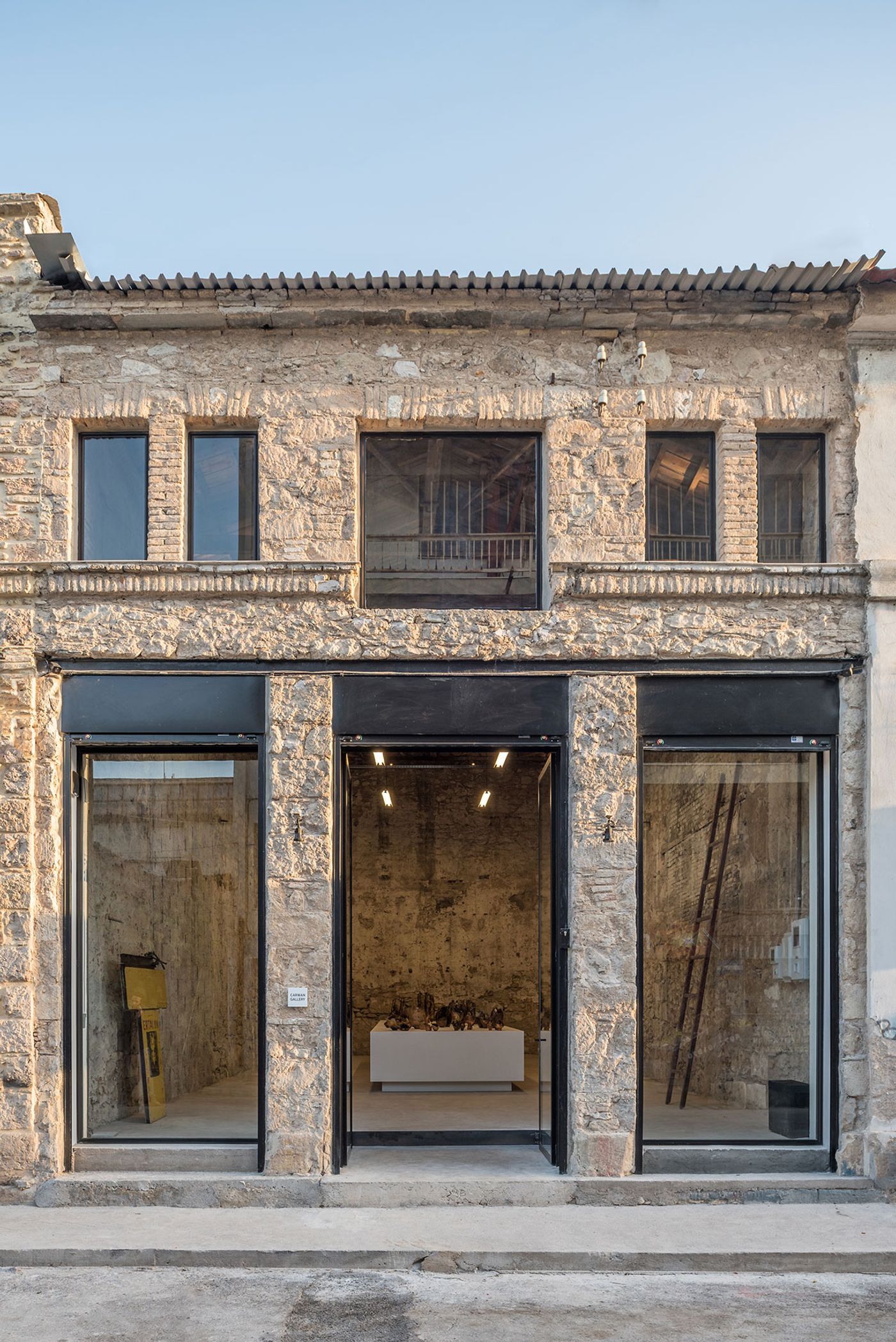
Exhibition view. Omer Arbel - 133 at Carwan gallery, Athens. Photo by Giorgos Sfakianakis.
No less extraordinary is the process underpinning Arbel’s latest sculptural series, "113", which is on display at the Carwan gallery in Athens – the venue’s first exhibition after it moved from Beirut to the Greek capital earlier this year. Part of an ongoing series of experiments exploring the relationship between copper alloys and glass, the 70 pieces on display at the Carwan’s industrial new space were made by pouring a liquid copper alloy inside glass vessels that have just been blown. As each piece cools, the glass shatters off, leaving a metallic shadow of itself due to the calculated discrepancy in the coefficients when it comes to the expansion of the two materials. This technique not only creates uniquely shaped vessels with an unpredictable variation but also produces an iridescent finish on the outside as the hot metal doesn’t come into contact with oxygen, which makes for an uncanny contrast with the blackened texture of the oxidized interior. Yatzer recently caught up with Arbel to talk about his latest series and his multidisciplinary practice.
(Answers have been condensed and edited for clarity.)
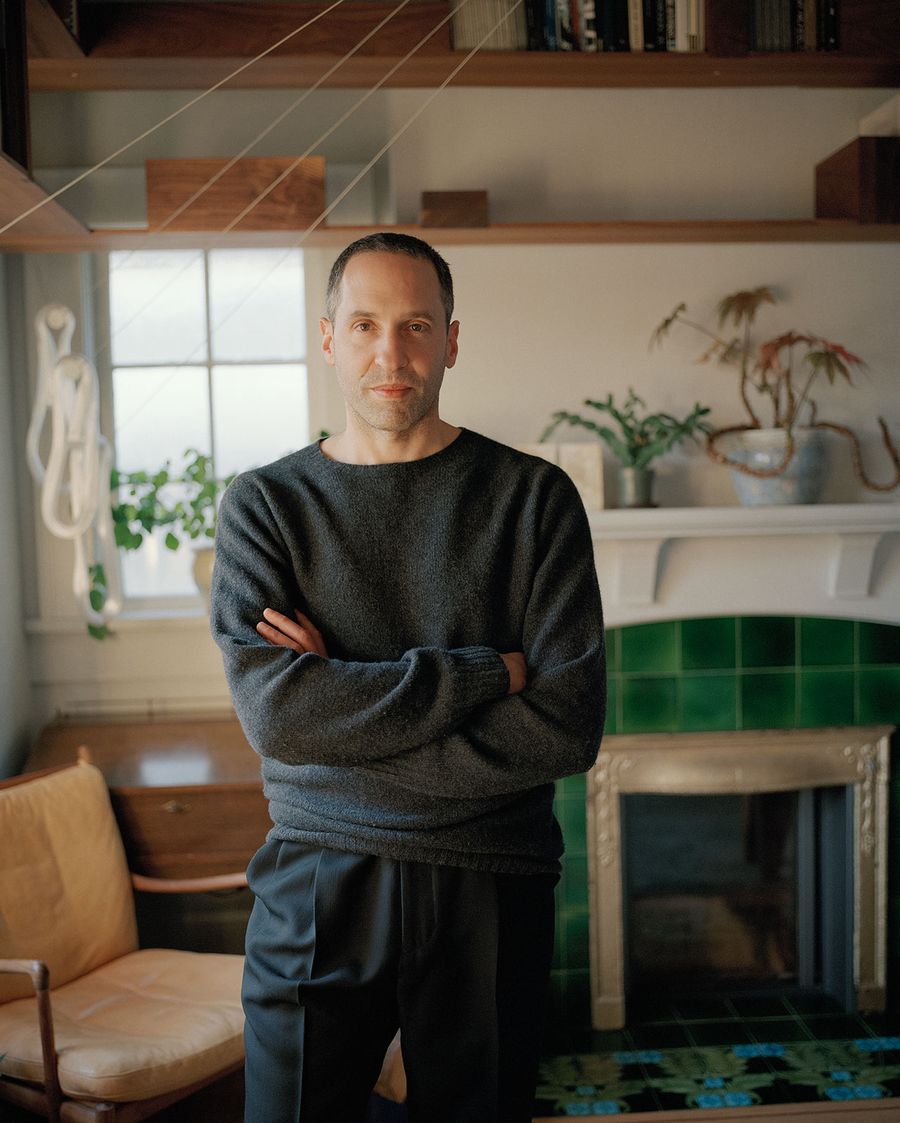
Omer Arbel portrait. Photo by Fahim Kassam.
"I perceive my role as that of a composer writing a symphony or a musical score". -Omer Arbel
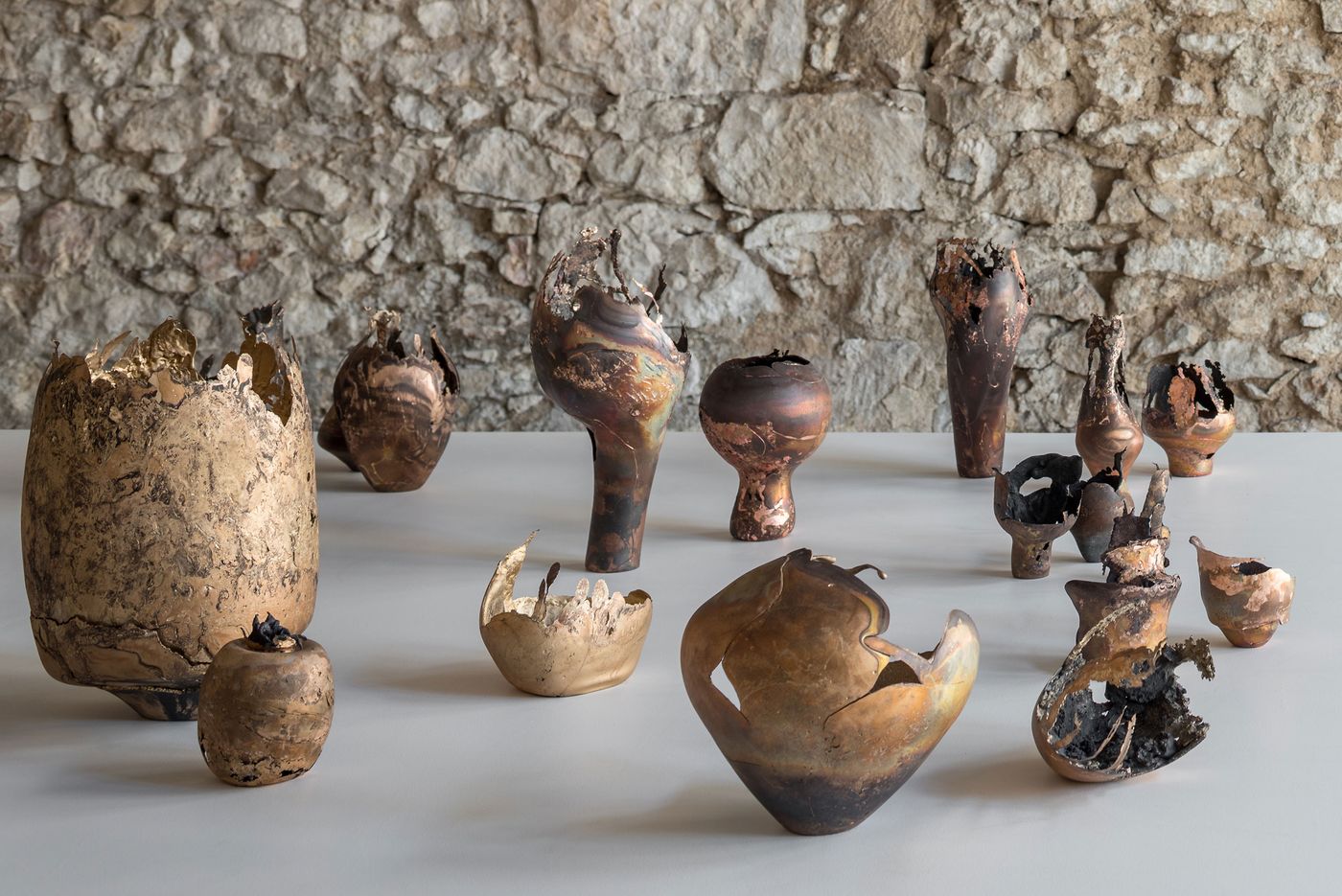
Exhibition view. Omer Arbel, 113 at Carwan gallery, Athens. Photo by Giorgos Sfakianakis.
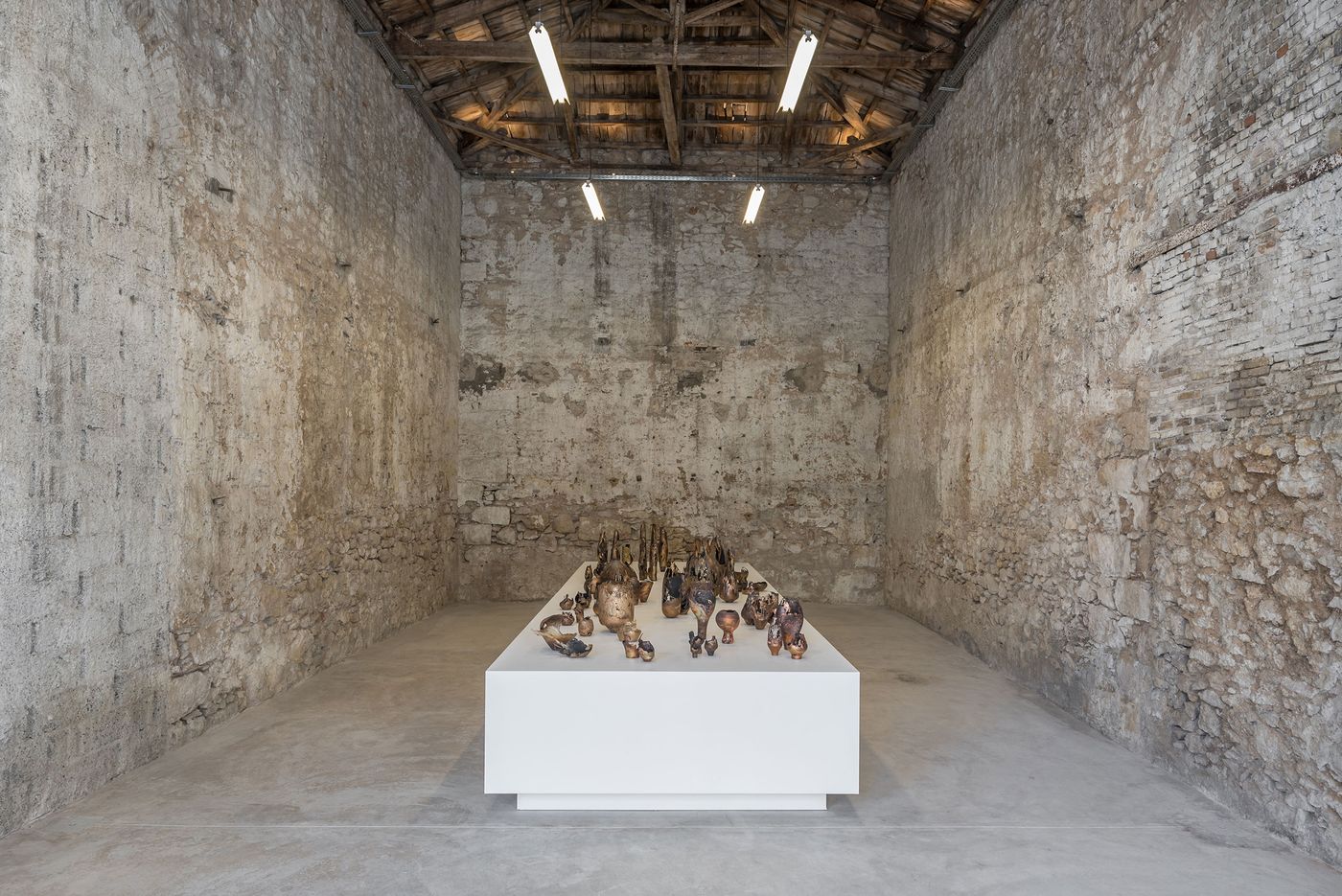
Exhibition view. Omer Arbel - 133 at Carwan gallery, Athens. Photo by Giorgos Sfakianakis.
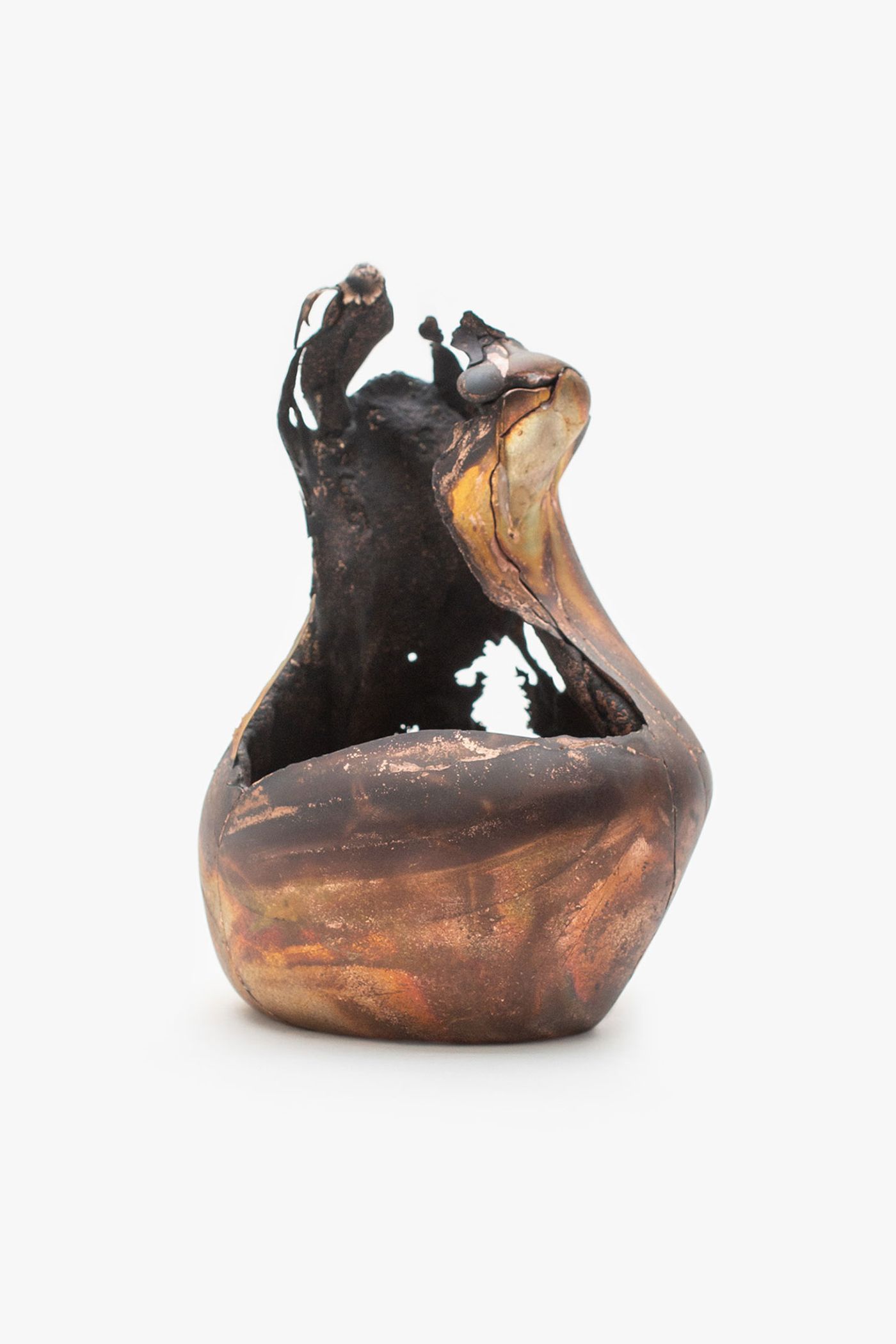
Omer Arbel, OAO113.2020.15, 2020. 15,4 x 11 x 10,5 cm. Copper alloy cast in glass. Courtesy Carwan gallery.
How did the inspiration for the 113 series come about?
For years I have been working on ideas resulting from the basic first step of matching the coefficient of expansion in glass and copper in terms of how one material transforms as a consequence of heat, and air flow, and affect the other. Some novel forms emerged from a series of explorations, first with copper and glass on their own (series 19 and 28) and later on, in tandem (series 76, 84 and 93). It was only a matter of time before it occurred to me to see what happens if we reverse the relationship and deliberately deviate from the expansion coefficients, so the materials reject each other rather than fuse, which is what we tried with 113.
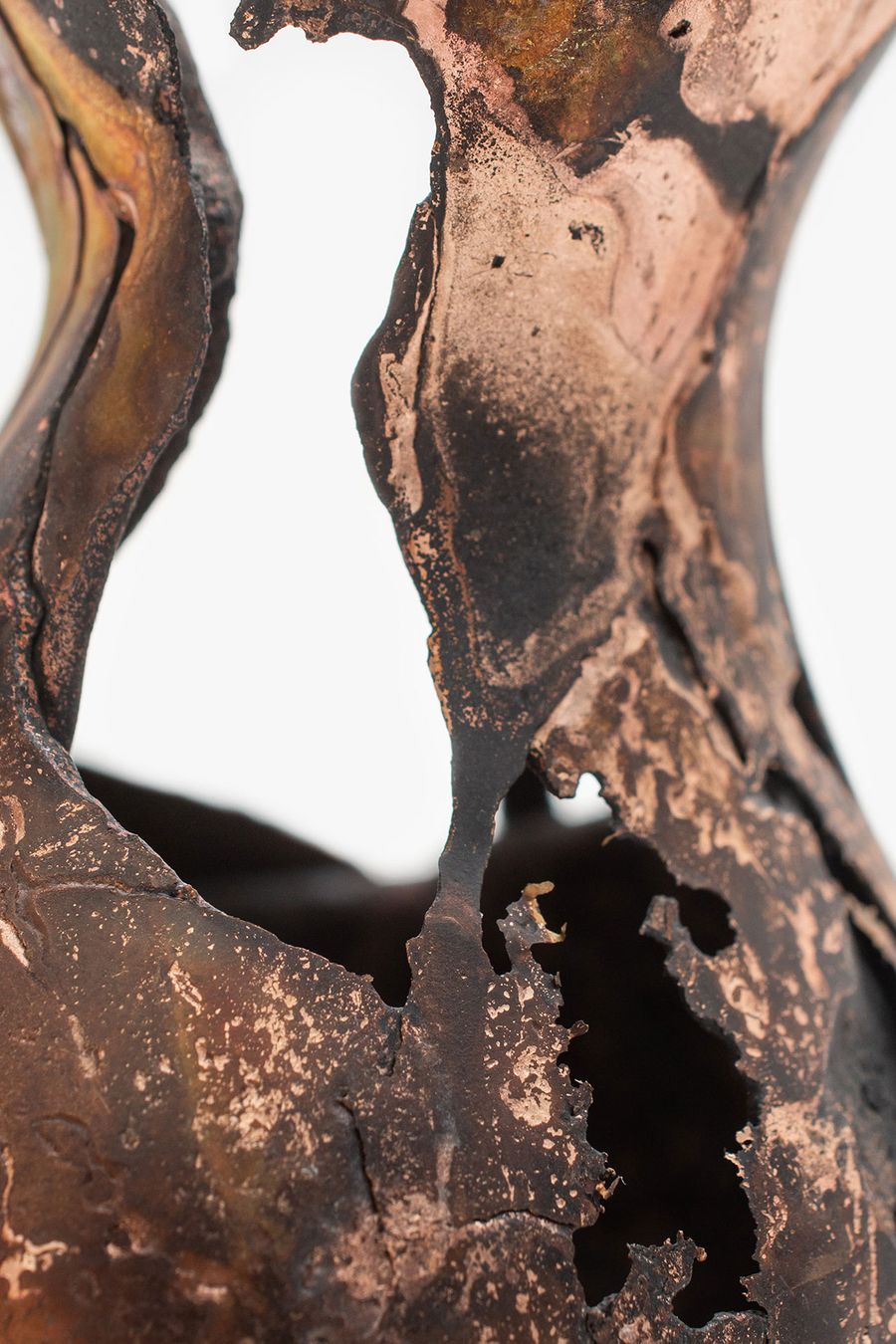
Omer Arbel, OAO113.2020.15 (detail), 2020. 15,4 x 11 x 10,5 cm. Copper alloy cast in glass. Courtesy Carwan gallery.

Omer Arbel, OAO113.2020.15, 2020. 15,4 x 11 x 10,5 cm. Copper alloy cast in glass. Courtesy Carwan gallery.
How much research and experimentation went into the series?
Changing the expansion coefficients was difficult and took many iterations. Learning how to work with the materials also took a lot of time; I would say, a year, maybe a year and a half.
How different are the finished pieces from your initial vision?
I never have an initial vision.
Carwan Gallery presents in Athens the solo exhibition “Omer Arbel : 113”. Video by Fahim Kassam.
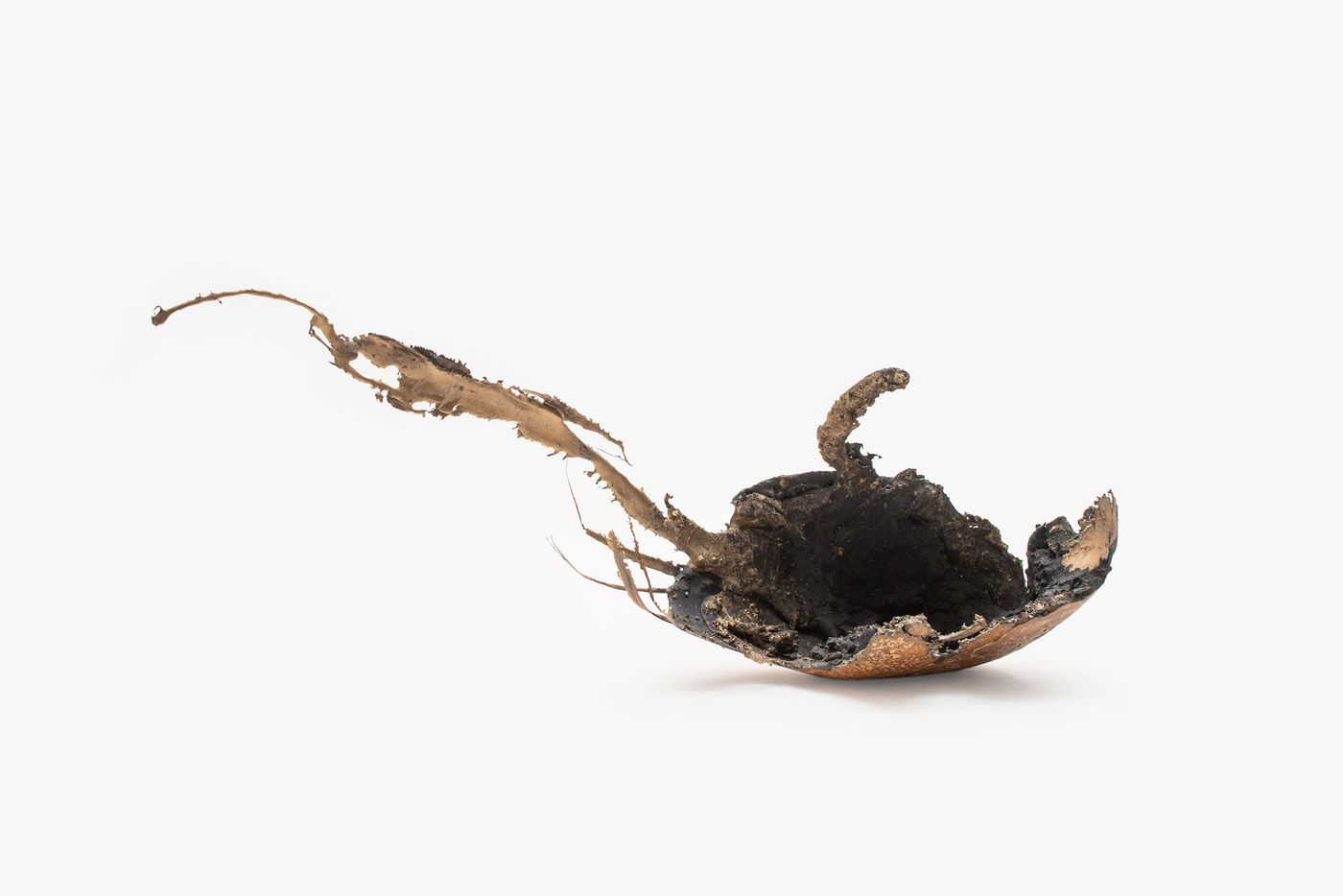
Omer Arbel, OAO113.2020.38, 2020. 18,5 x 40,6 x 22 cm. Copper alloy cast in glass. Courtesy Carwan gallery.
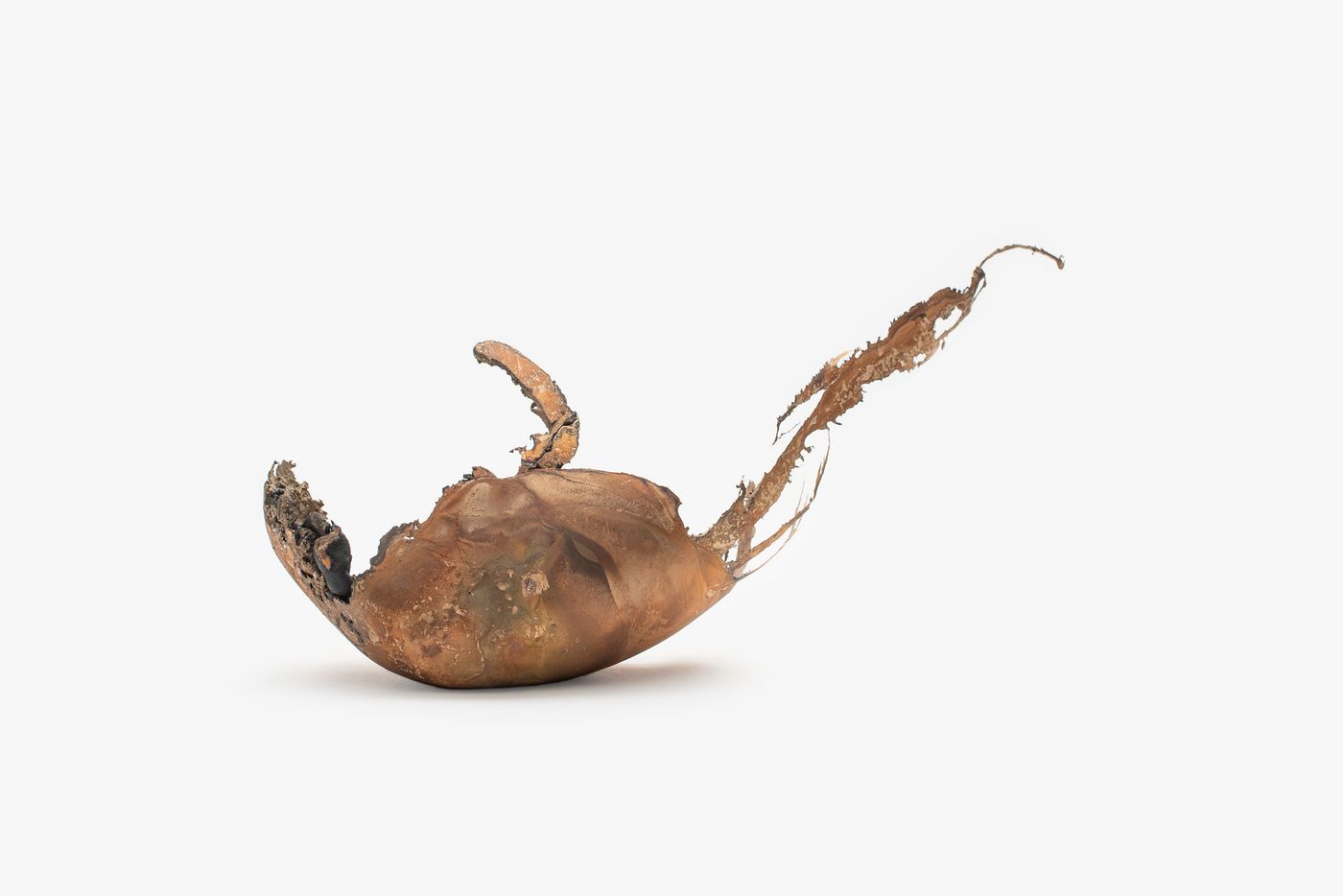
Omer Arbel, OAO113.2020.38, 2020.18,5 x 40,6 x 22 cm. Copper alloy cast in glass. Courtesy Carwan gallery.
The unique manufacturing process you have invented paradoxically means that each piece is a product of both design and chance, precise calculations and pure unpredictability. How central is this dichotomy to your practice and why?
It is indeed central to my practice. I perceive my role as that of a composer writing a symphony or a musical score. The work can be performed by different orchestras or musicians, who each bring their own skill, talent, intuitions and obsessions into the work. In our case, the musicians are the craftspeople but also the basic chemistry of the materials, as well as the ambient contingencies of the moment, taking into consideration things like the weather conditions on that day. Every time the work is performed, the results are different to some extent.
Why this is central to my practice is a harder question. I suppose I find the moment when an abstract idea that could have any number of infinite results transforms into a specific object that is different from any other, or for lack of a better word, that is sacred.
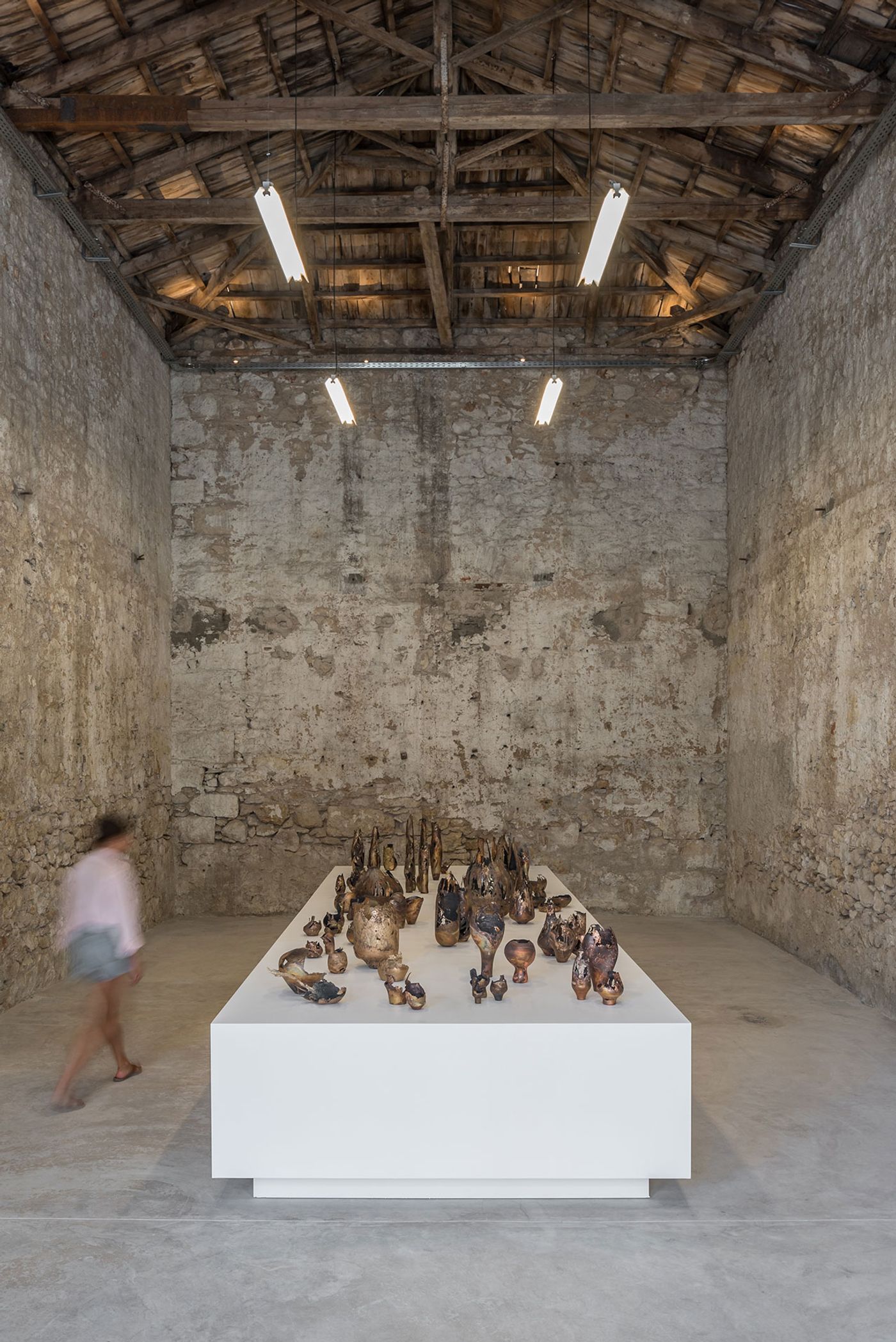
Exhibition view. Omer Arbel - 133 at Carwan gallery, Athens. Photo by Giorgos Sfakianakis.
The copper vessels appear as if they have been formed by some kind of geological process. How intentional is the blurring of the natural and the man-made in your work?
It’s not at all intentional. People often characterize my work using the word “organic”, and yes, the forms might be evocative those seen in nature. Be that as it may, my goal is never to emulate nature, allude or refer to it in any way. My process is to invent a novel process.

Exhibition view. Omer Arbel - 133 at Carwan gallery, Athens. Photo by Giorgos Sfakianakis.
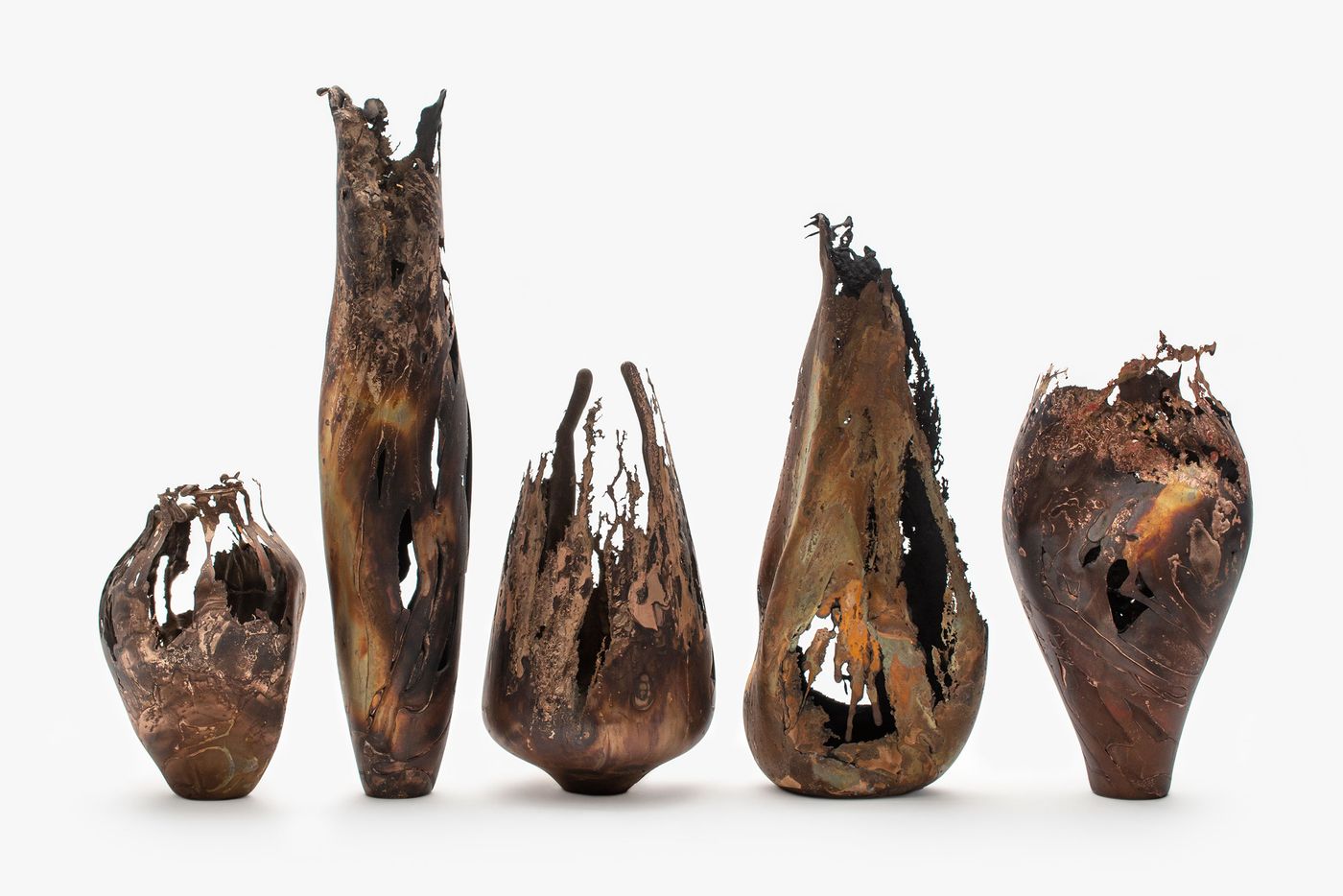
Omer Arbel, OAO113.2020. Courtesy Carwan gallery.
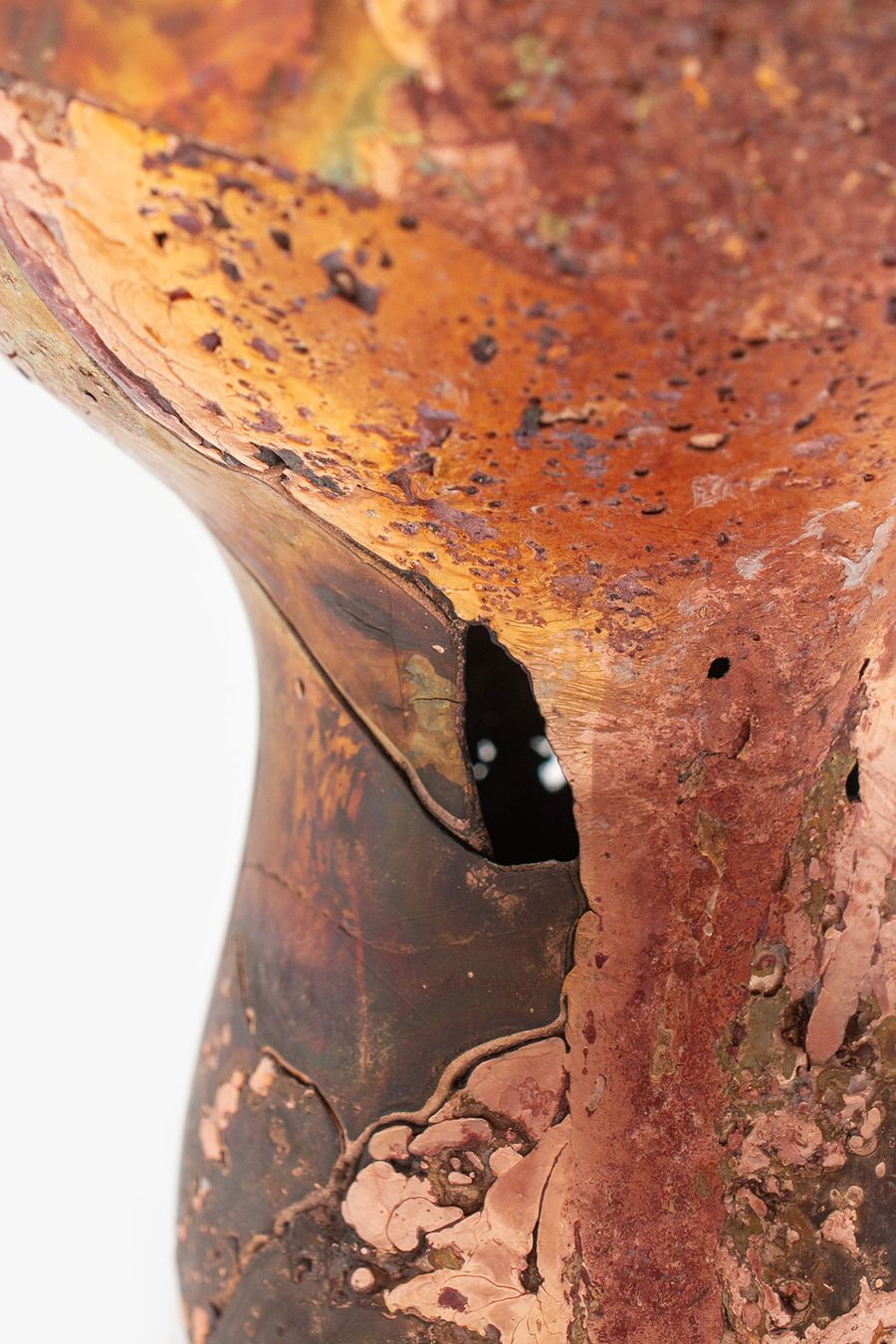
Omer Arbel, OAO113.2020.16 (detail), 2020. 21 x 15 x 15 cm. Copper alloy cast in glass. Courtesy Carwan gallery.
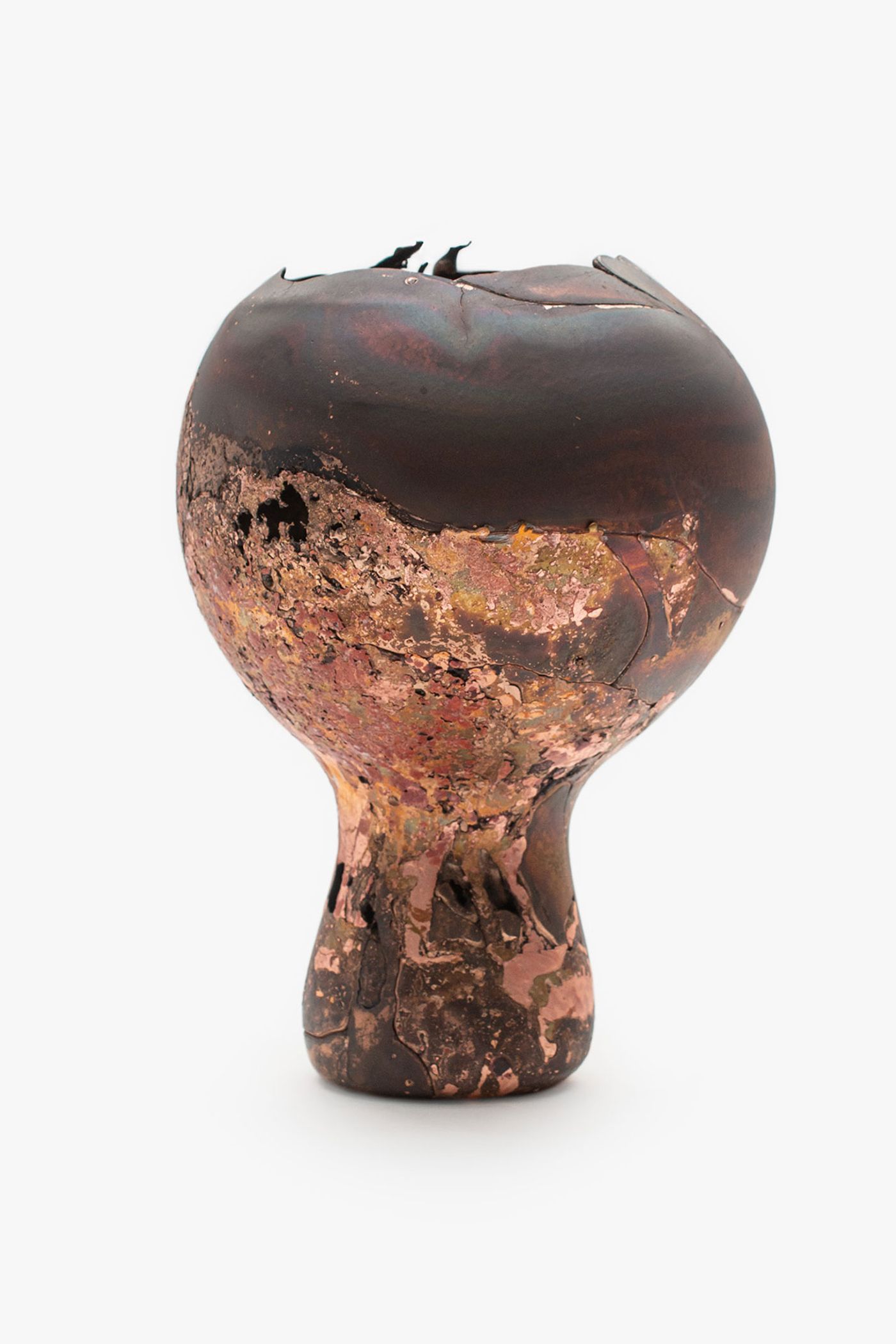
Omer Arbel, OAO113.2020.16, 2020. 21 x 15 x 15 cm. Copper alloy cast in glass. Courtesy Carwan gallery.
You have been experimenting with glass for more than a decade now. What makes glass such an interesting material for you?
I love all materials and see potential in all of them. While I love glass very much, I can’t say I love it more than other materials. The truth is, I have so much work in glass, because glass is most available to me, and not only that, available in a casual way as we have a glass shop in our studio!
Your work is underpinned by an inquisitive sensibility that eschews the modernist axiom of form-follows-function. How would you define your design philosophy?
I’m not sure it’s important for the creative to define a design philosophy during their working lifetime. I fear the exercise is crippling to future work. So my answer would be: “you tell me!” But if you pushed me to answer, I would refer to the sublime which is an idea about the coexistence of the experience of beauty and terror, or the uncanny, which is the terror that comes from seeing the familiar in an unfamiliar way.
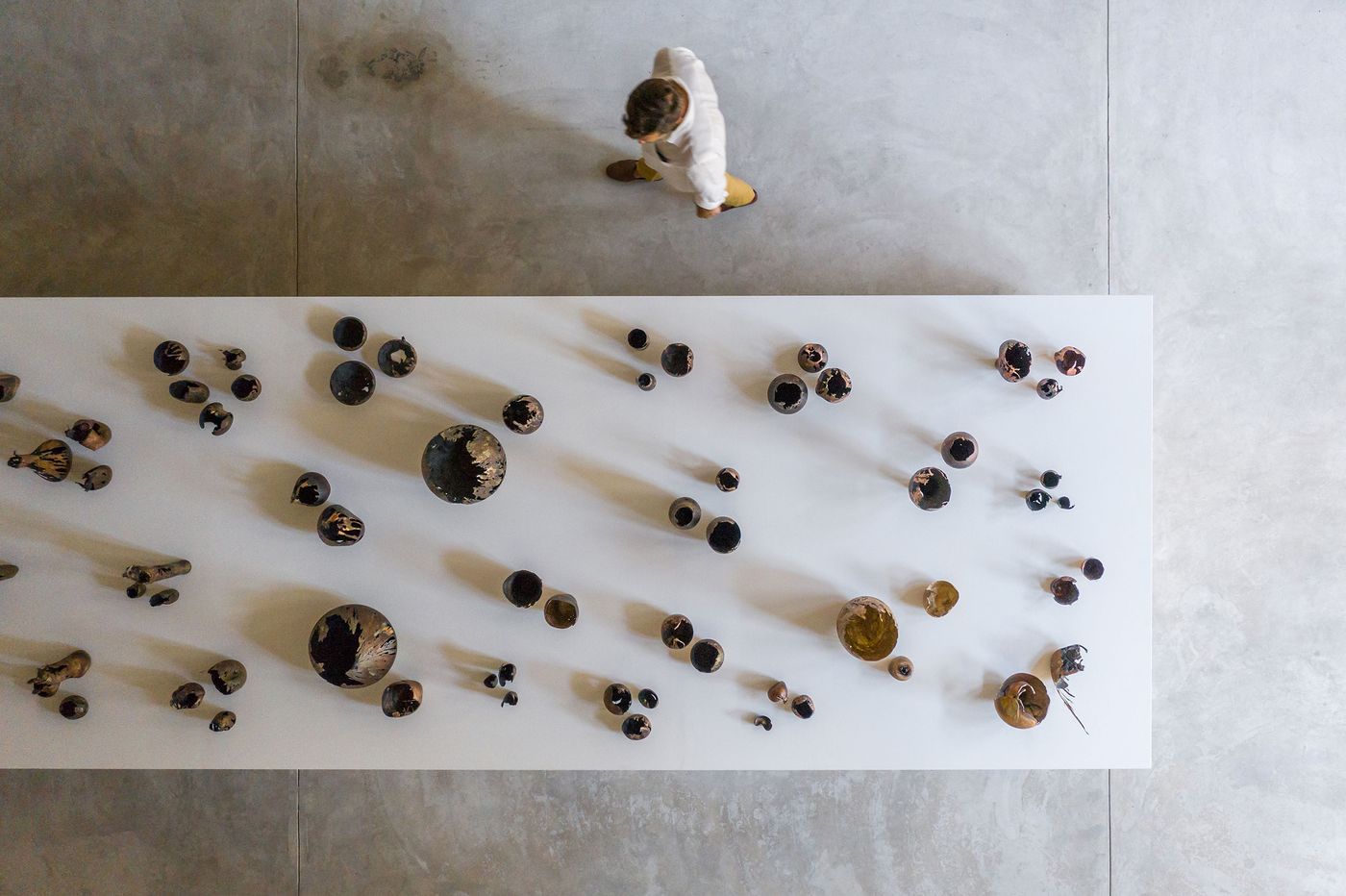
Exhibition view. Omer Arbel - 133 at Carwan gallery, Athens. Photo by Giorgos Sfakianakis.
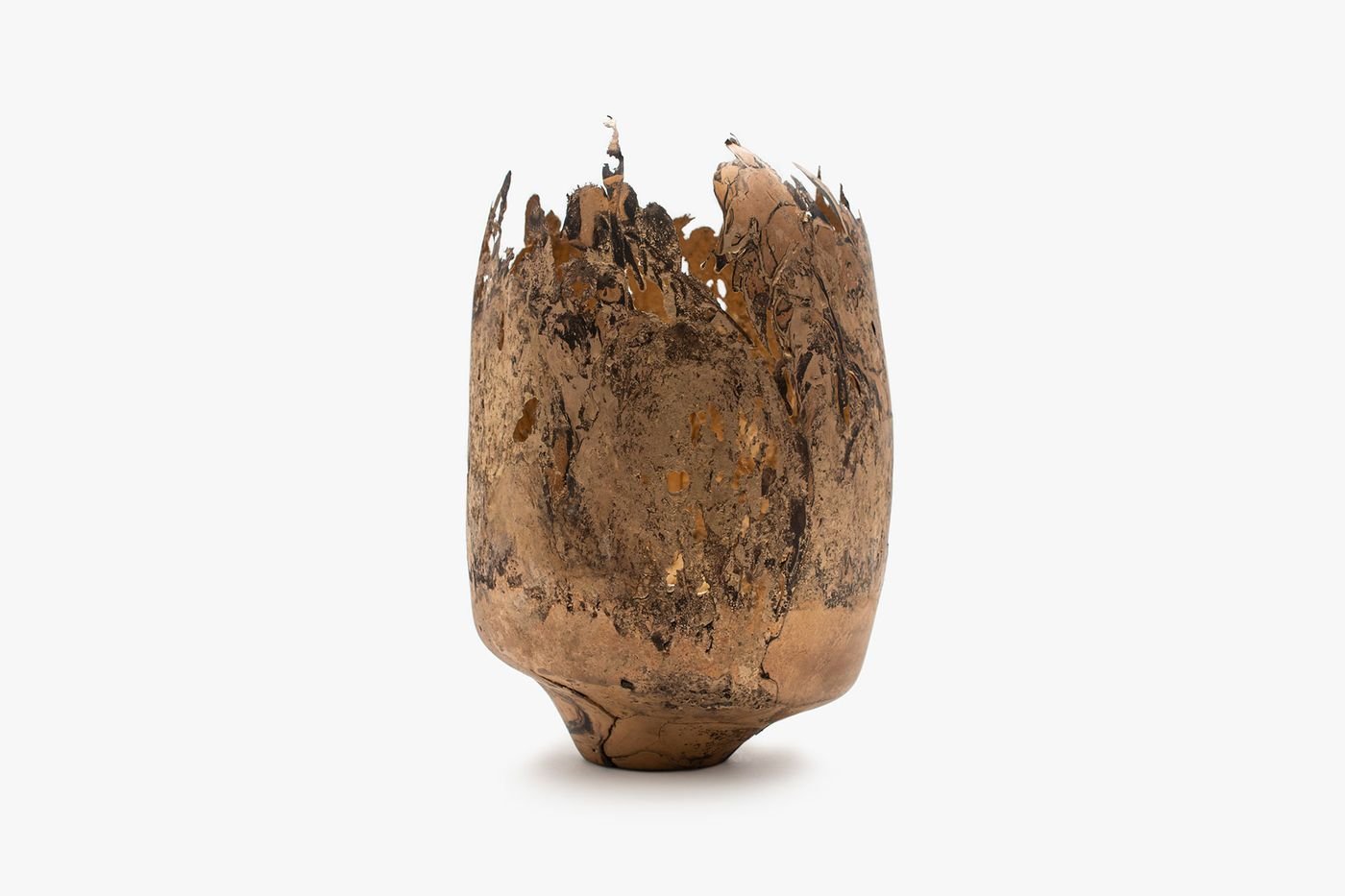
Omer Arbel, OAO113.2020.64, 2020. 36,3 x 24 x 22,5 cm. Copper alloy cast in glass. Courtesy Carwan gallery.

Omer Arbel, OAO113.2020.11, 2020. 10.2 x 10.2 x 9 cm. Copper alloy cast in glass. Courtesy Carwan gallery.
You seamlessly move between architecture, sculpture, invention and design. How easy is it to shift between disciplines? How do they inform one another?
At our studio we do not see these areas of work as different from one another. The only things that differ are scale and the socioeconomic systems around us that are conventionally used to deliver work (sculpture is shown at a gallery or commercial institution; design is sold at a store; architecture is commissioned). For us, internally it’s all the same thing.
You have been chronologically labelling your works with numbers instead of titles. What is the significance of this practice?
In the beginning this was my way of avoiding the practice of naming pieces, which I find oscillates between megalomania and meekness out there. Over time, it has become an internal tool for cataloguing the work, allowing me to track my own obsessions through the years, learn about myself and help me advance the work.
What are you currently working on?
We are working on four building projects, which are currently being exhibited at the Aedes gallery in Berlin. I am also collaborating with a number of scientists on some large scale sculpture projects which aim to involve natural processes. And, as always, I am devoted to my, by now mature, love affair with glass.
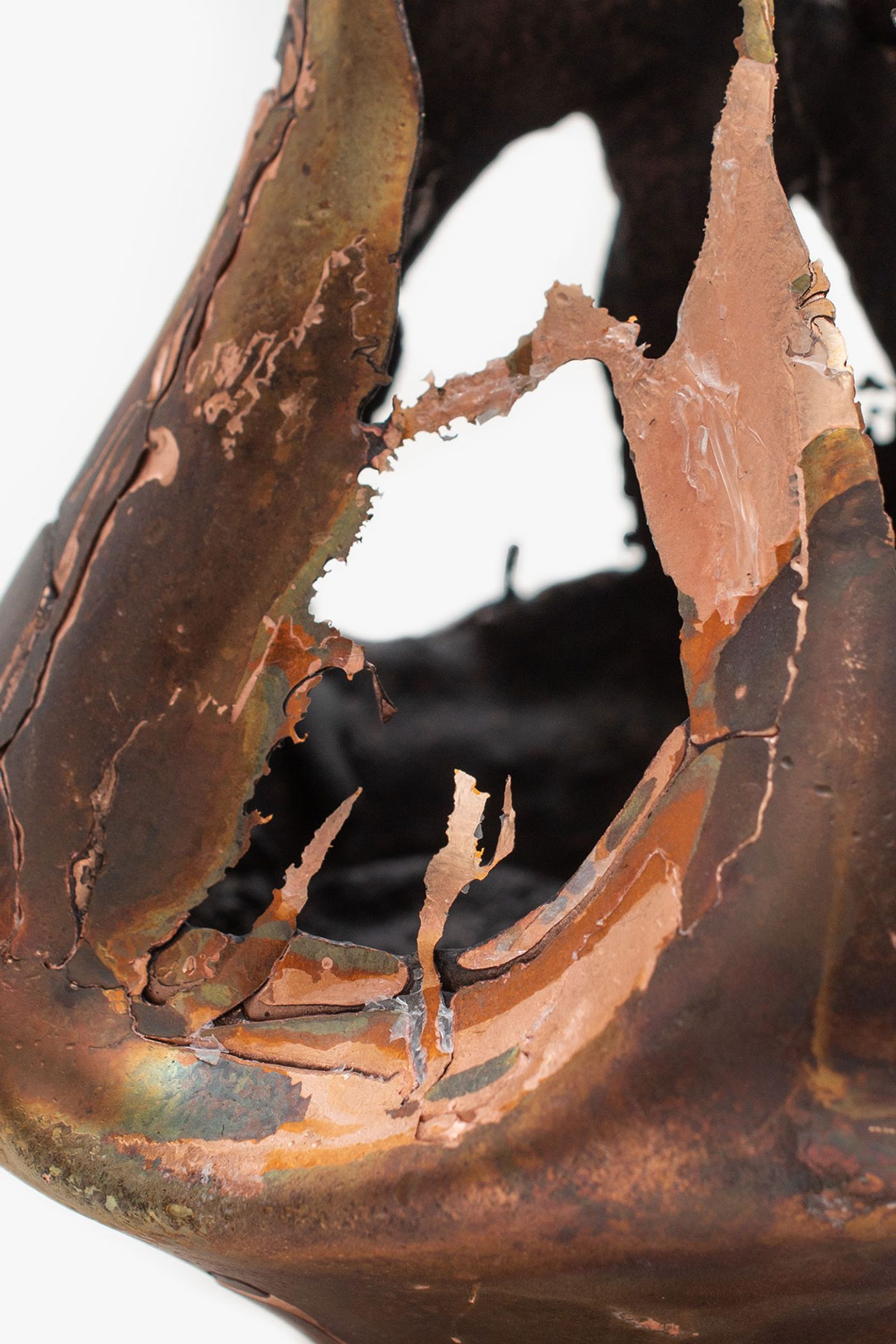
Omer Arbel, OAO113.2020.18 (detail), 2020. 13,8 x 12,5 x 12 cm. Copper alloy cast in glass. Courtesy Carwan gallery.
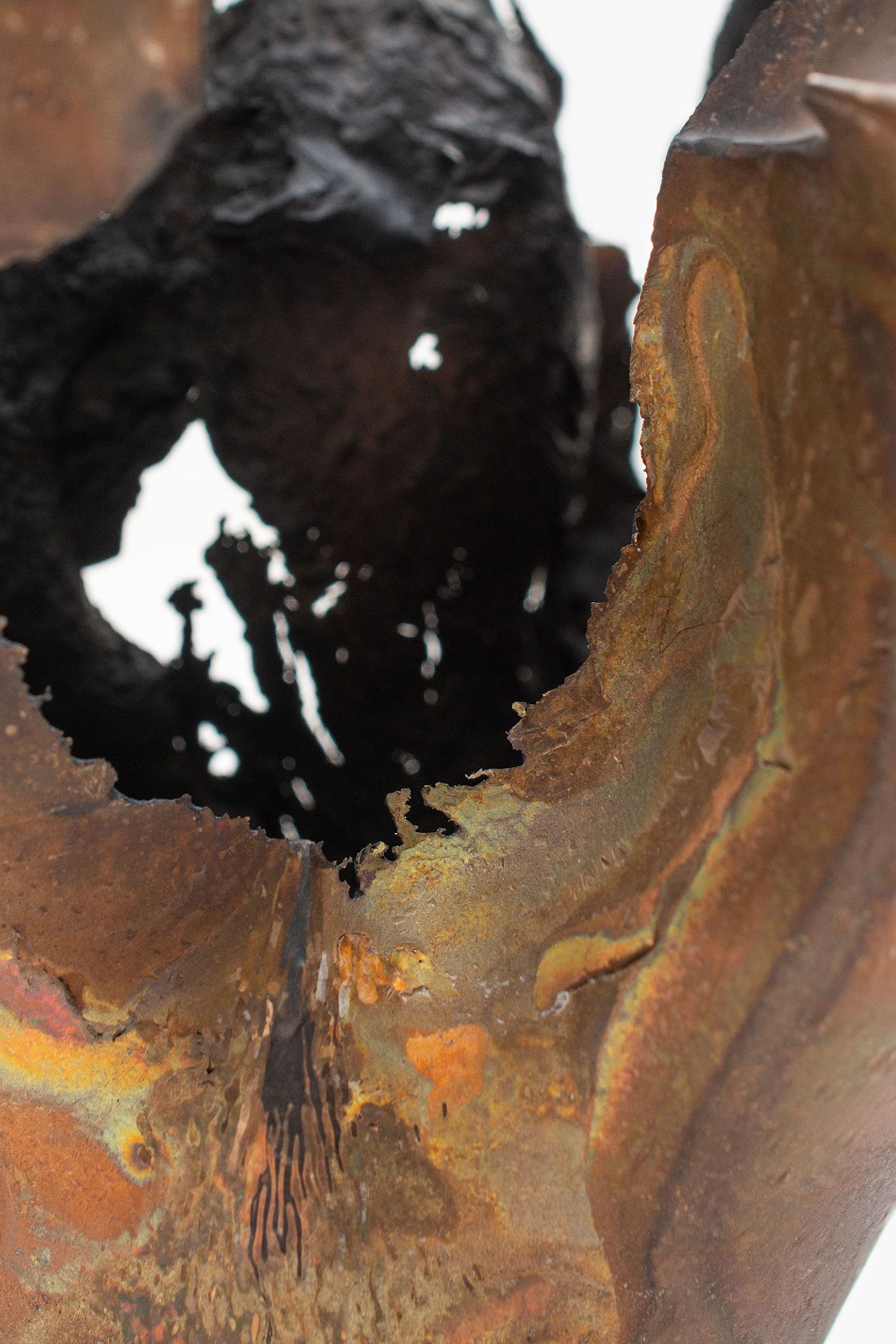
Omer Arbel, OAO113.2020.12 (detail), 2020. 19,1 x 11,8 x 10,7 cm. Copper alloy cast in glass. Courtesy Carwan gallery.
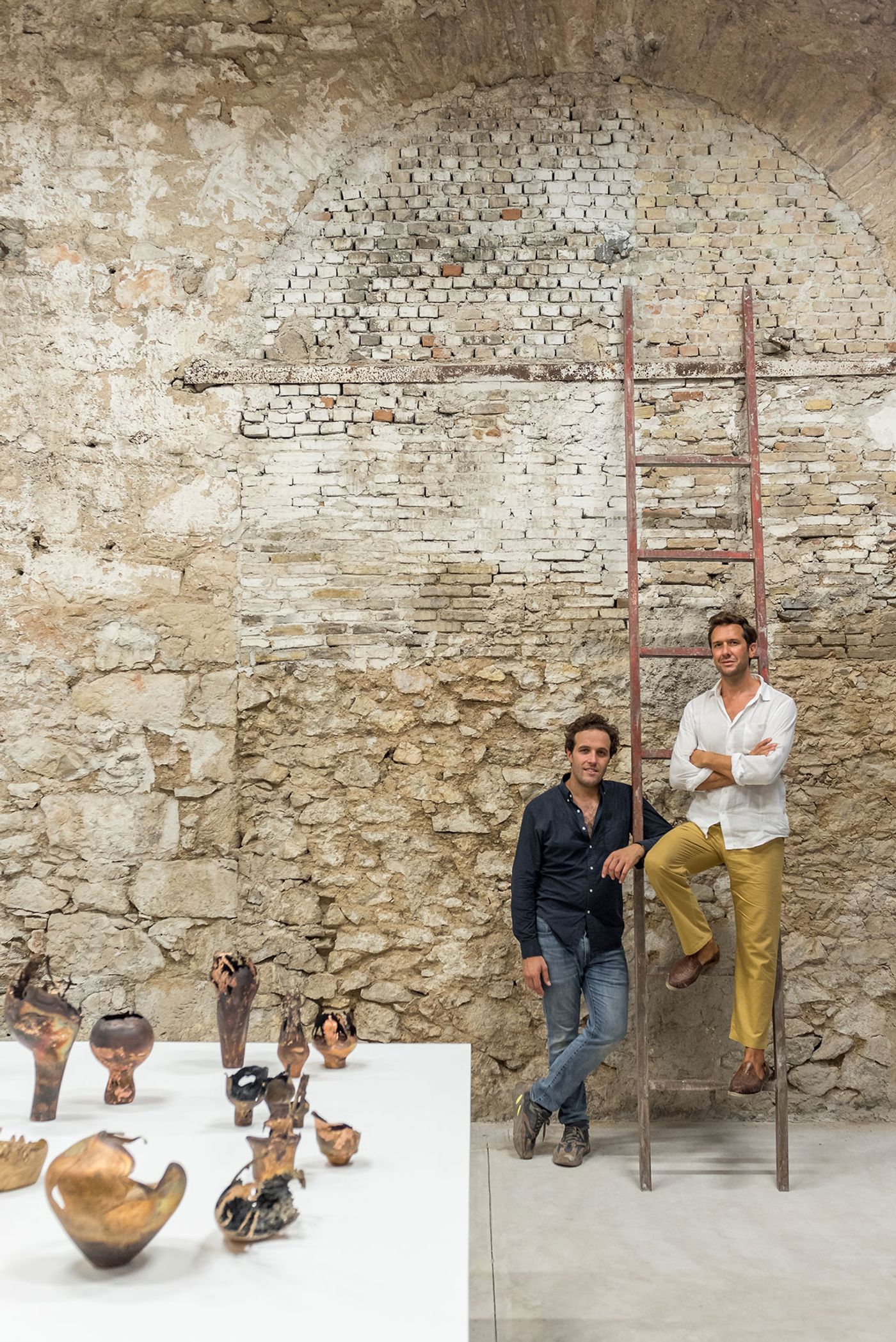
Carwan gallery founders, Nicolas Bellavance-Lecompte (right) and Quentin Moyse (left). Photo by Giorgos Sfakianakis.